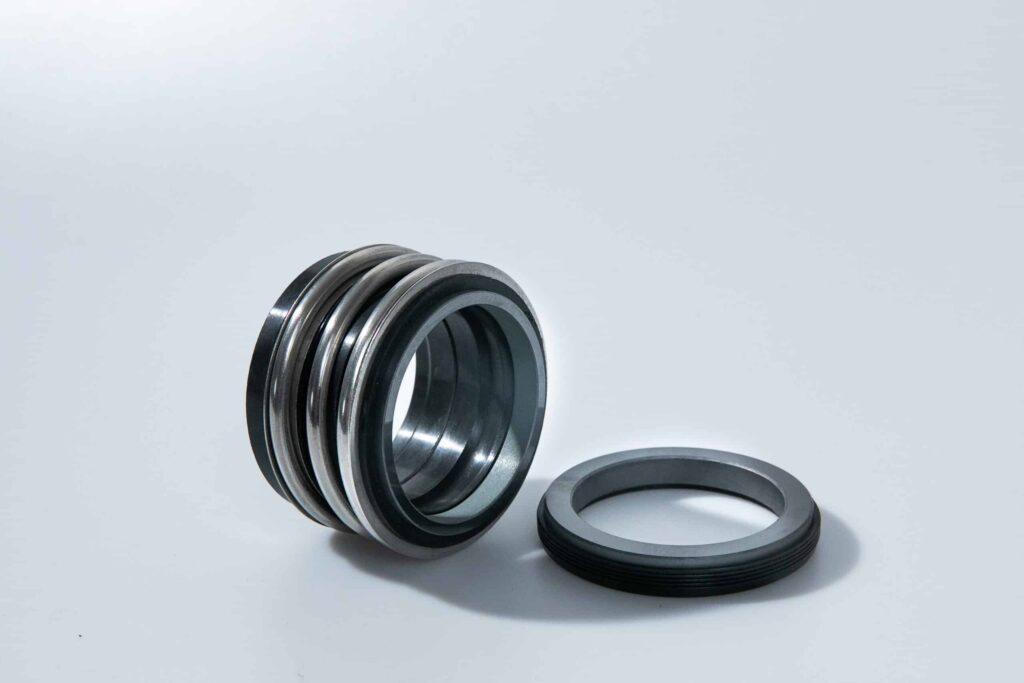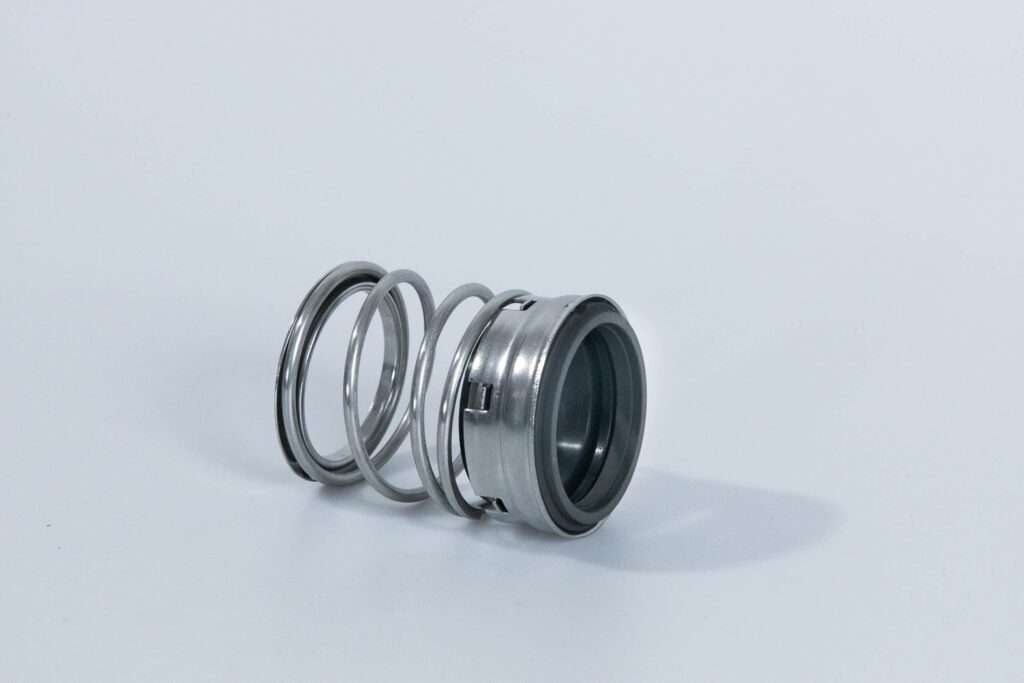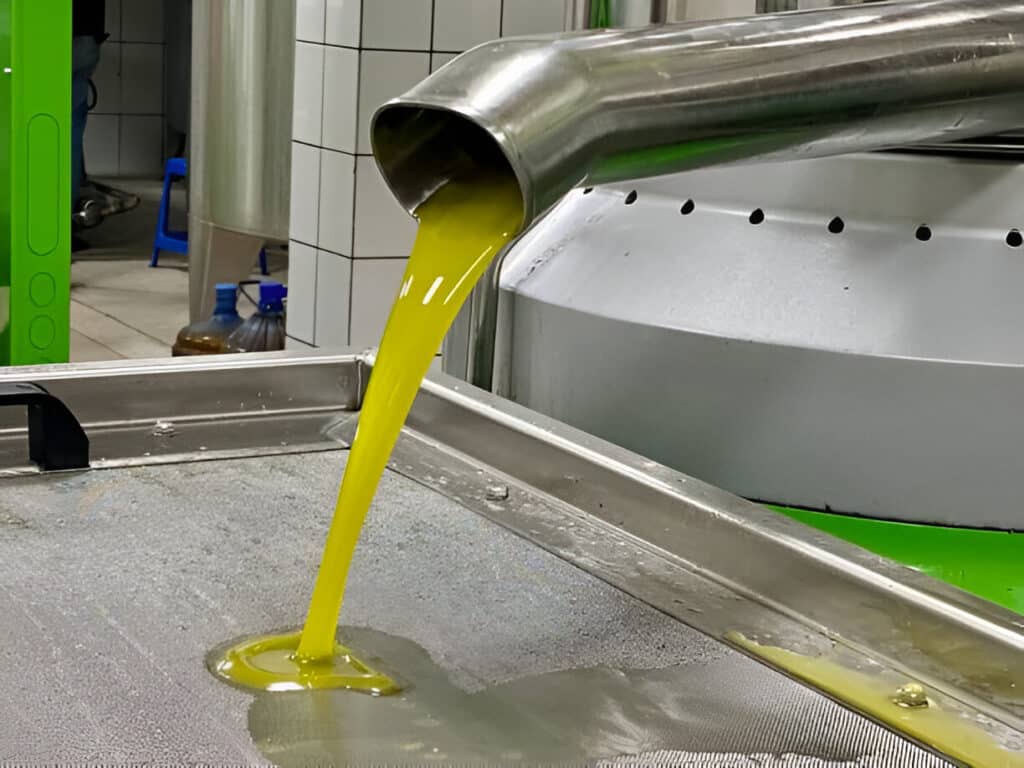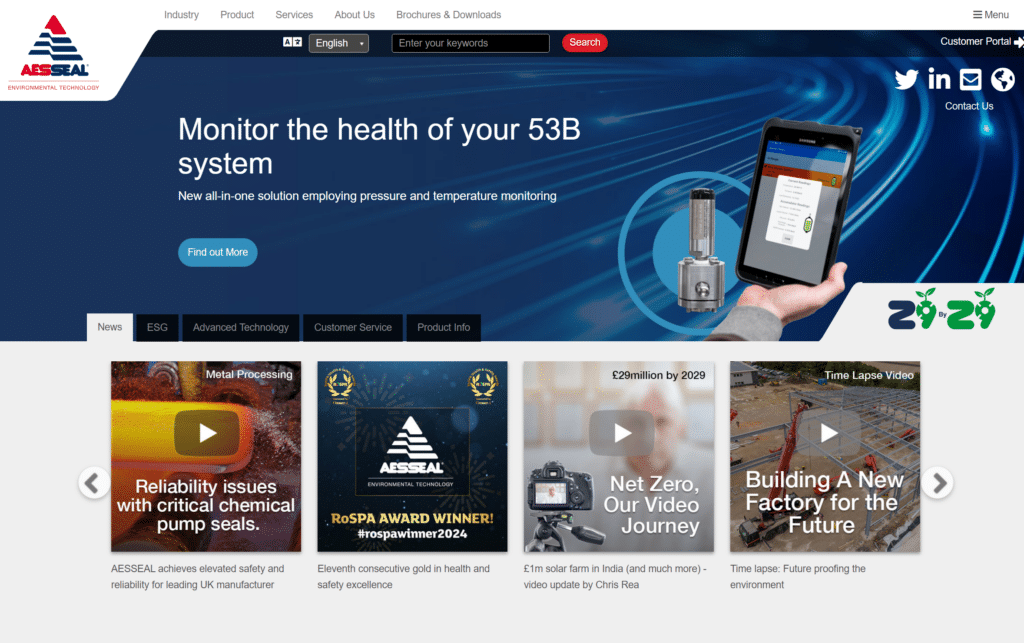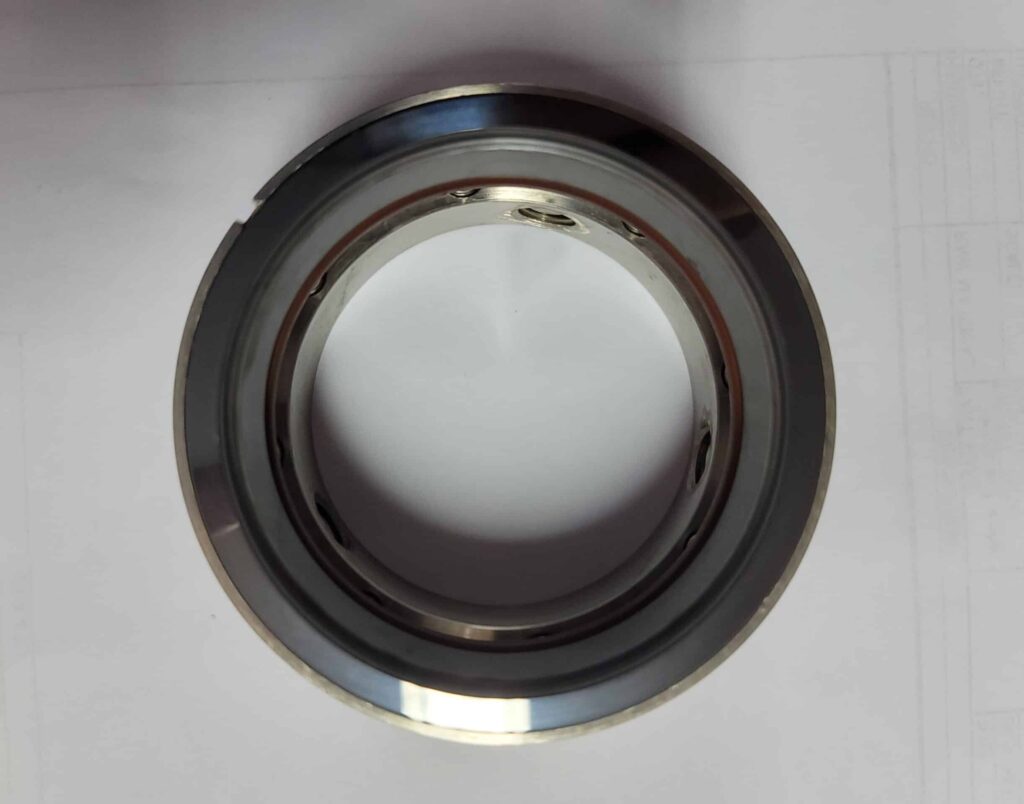
Ceramic
Ceramic, particularly alumina oxide (Al2O3), is a popular choice for seal face materials due to its excellent chemical resistance, wear resistance, and high thermal conductivity. It is suitable for a broad range of clean applications and can withstand extreme temperatures up to 1,800°F (982°C). However, ceramic is brittle and susceptible to thermal shock, making it less suitable for applications with rapid temperature changes or mechanical impacts.
Carbon
Carbon is a versatile seal face material known for its self-lubricating properties and compatibility with a wide range of process fluids. It offers good chemical resistance to most aromatic hydrocarbons, solvents, and acids. Carbon grades, such as resin-impregnated carbon, possess improved mechanical strength and wear resistance. However, carbon has limited abrasion resistance and is not recommended for use with highly abrasive process fluids or extreme pressure conditions.
Silicon Carbide
Silicon carbide (SiC) is an ideal seal face material for harsh environments due to its exceptional hardness, wear resistance, and chemical inertness. It provides excellent thermal conductivity and dimensional stability, making it suitable for high-temperature applications up to 1,000°F (538°C). Silicon carbide is often paired with itself or other hard face materials like tungsten carbide for optimal performance in demanding applications.
Tungsten Carbide
Tungsten carbide is a hard, dense material with excellent wear resistance and chemical compatibility. It is commonly used in mechanical seals for abrasive and high-pressure applications. Tungsten carbide can be paired with itself or other hard face materials for enhanced durability and performance. However, it has a relatively high coefficient of thermal expansion, which can lead to thermal distortion in extreme temperature conditions.
Ni-Resist
Ni-Resist is a nickel-chromium alloy known for its excellent corrosion resistance and moderate wear resistance. It is suitable for sealing aggressive chemicals and viscous fluids in low-pressure applications. Ni-Resist has good thermal conductivity and can withstand temperatures up to 1,000°F (538°C). However, it has limited abrasion resistance and may not be suitable for highly abrasive process fluids.
GFPTFE
Glass-filled PTFE (GFPTFE) is a self-lubricating, non-metallic seal face material with excellent chemical resistance to a wide range of chemicals, including acids, alkalis, and solvents. It has a low coefficient of friction and good wear resistance, making it suitable for low-pressure applications and clean fluids. GFPTFE can operate in temperatures ranging from -400°F to 500°F (-240°C to 260°C), but it has limited mechanical strength compared to metallic materials.
Difference Between Seal Face Materials
| Material | Chemical Resistance | Wear Resistance | Temperature Range | Thermal Conductivity | Mechanical Strength | Abrasion Resistance | Suitable Applications |
|---|---|---|---|---|---|---|---|
| Ceramic (Al2O3) | Excellent | Excellent | Up to 1,800°F (982°C) | High | Brittle, susceptible to thermal shock | Excellent | Clean applications, high temperatures |
| Carbon | Good resistance to hydrocarbons, solvents, and acids | Moderate | Varies by grade | Moderate | Limited, improved with resin impregnation | Limited | Wide range of process fluids, avoid abrasive fluids or extreme pressure |
| Silicon Carbide (SiC) | Exceptional | Excellent | Up to 1,000°F (538°C) | Excellent | High | Excellent | Harsh environments, demanding applications |
| Tungsten Carbide | Excellent | Excellent | Varies by grade | Moderate | High | Excellent | Abrasive and high-pressure applications |
| Ni-Resist | Excellent corrosion resistance, moderate wear resistance | Moderate | Up to 1,000°F (538°C) | Good | Moderate | Limited | Aggressive chemicals, viscous fluids, low-pressure applications |
| GFPTFE | Excellent resistance to acids, alkalis, and solvents | Good | -400°F to 500°F (-240°C to 260°C) | Low | Limited | Moderate | Low-pressure applications, clean fluids |
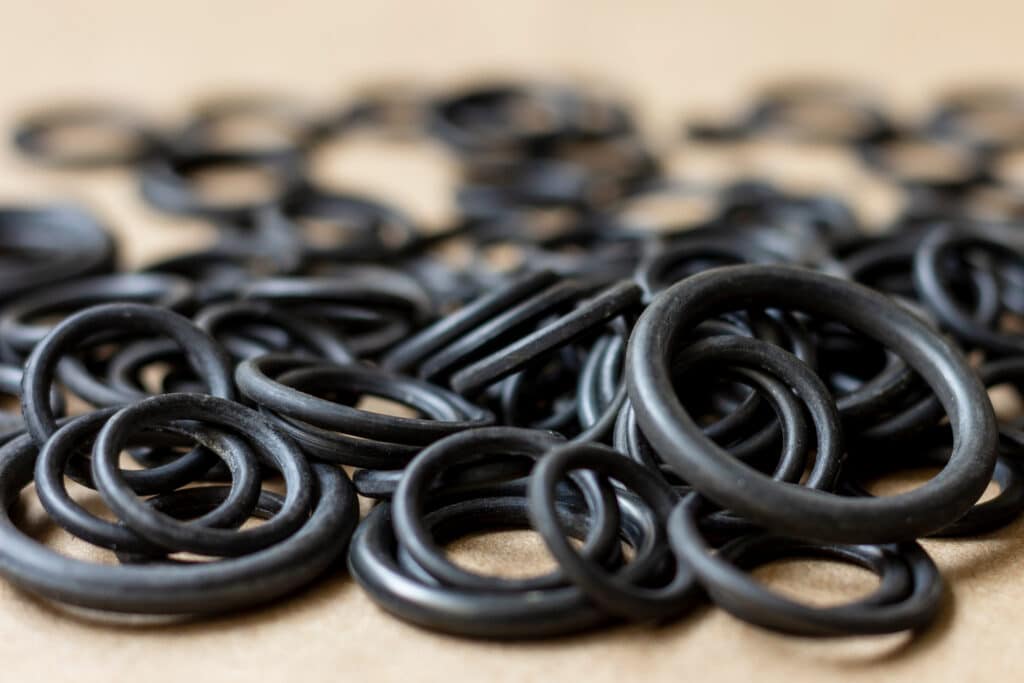
Elastomer Materials
Buna (Nitrile)
Buna, also known as nitrile rubber, is a synthetic rubber copolymer that offers good resistance to oils, fuels, and hydraulic fluids. It has a wide operating temperature range from -40°F to 250°F (-40°C to 121°C) and provides excellent mechanical properties. Buna is a cost-effective elastomer choice for general-purpose sealing applications.
EPDM
Ethylene propylene diene monomer (EPDM) is a versatile elastomer material that offers exceptional resistance to ozone, weathering, and aging. It has good chemical resistance to a wide range of chemicals, including acids, alkalis, and ketones. EPDM has a wide operating temperature range from -60°F to 300°F (-51°C to 149°C) and is commonly used in outdoor and high-temperature applications.
Viton
Viton, also known as fluorocarbon rubber, is a high-performance elastomer that provides excellent chemical resistance to aggressive chemicals, oils, and solvents. It has a wide operating temperature range from -20°F to 400°F (-29°C to 204°C) and maintains its mechanical properties even at elevated temperatures. Viton is ideal for demanding applications in the chemical processing, oil and gas, and automotive industries.
Difference Between Elastomer Materials
| Elastomer Material | Temperature Range | Chemical Resistance | Abrasion Resistance | Key Properties |
|---|---|---|---|---|
| Buna (Nitrile) | -40°F to 250°F (-40°C to 121°C) | Good resistance to oils, fuels, and hydraulic fluids | Moderate | Cost-effective, poor resistance to ozone and sunlight |
| EPDM | -60°F to 300°F (-51°C to 149°C) | Good resistance to acids, alkalis, and steam | Moderate | Excellent resistance to ozone, sunlight, and weather aging, limited resistance to oils and fuels |
| Viton (Fluorocarbon) | -20°F to 400°F (-29°C to 204°C) | Exceptional resistance to a wide range of aggressive chemicals, including aromatic hydrocarbons, chlorinated solvents, and acids | Excellent | High-performance, expensive, limited flexibility at low temperatures |
How to Select the Correct Mechanical Seal Material
Chemical Compatibility
The seal face and elastomer materials must be compatible with the process fluid to prevent chemical corrosion, swelling, or degradation. Use a compatibility checker or consult with the material manufacturer to ensure that the selected materials are suitable for the specific chemical environment.
Temperature Range
Consider the operating temperature range of the application and choose materials that can withstand the expected temperature extremes. Seal face materials like ceramic and silicon carbide can handle high temperatures, while elastomers like Viton and EPDM provide excellent high-temperature performance.
Pressure Conditions
Evaluate the pressure conditions of the application and select materials that can withstand the expected pressure range. Hard seal face materials like tungsten carbide and silicon carbide are suitable for high-pressure applications, while elastomers with good mechanical strength, such as Buna and Viton, can handle moderate to high pressures.
Mechanical Strength
Consider the mechanical properties of the seal face and elastomer materials, such as hardness, wear resistance, and abrasion resistance. Choose materials that can withstand the mechanical stresses and abrasive conditions of the application to ensure long-term sealing performance.
FAQs
What Are the Most Durable Materials for High-Pressure Applications?
For high-pressure applications, the most durable seal face materials are tungsten carbide and silicon carbide. These materials offer exceptional wear resistance, hardness, and mechanical strength, making them suitable for demanding environments. Elastomers with good mechanical properties, such as Viton and Buna, can also handle high-pressure conditions.
Are There Materials That Are Particularly Resistant to Chemical Corrosion?
Ceramic materials, such as aluminum oxide, and advanced ceramics, like silicon carbide, provide excellent chemical resistance to a wide range of chemicals, including acids, alkalis, and solvents. Fluorocarbon elastomers, such as Viton, also offer exceptional chemical resistance to aggressive chemicals and are suitable for demanding applications in the chemical processing industry.
Can I Use the Same Material for All Parts of the Seal?
It is not recommended to use the same material for all parts of the seal, as different components have specific requirements. Seal faces are typically made from hard materials like ceramics, carbides, or carbon, while secondary seals (elastomers) are made from softer materials like Buna, EPDM, or Viton.

